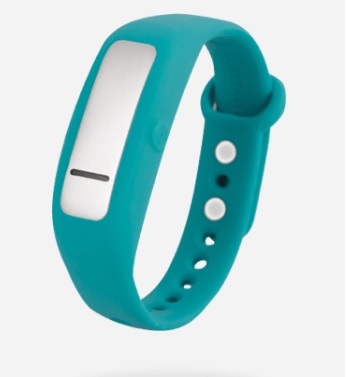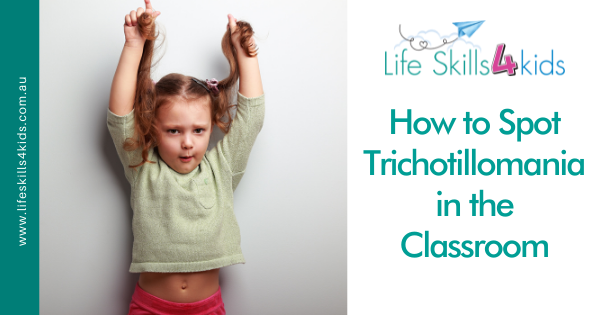Trichotillomania has always been a secretive thing, leading health professionals to believe for many years that it was extremely rare. But in recent years, researchers have discovered that it’s actually a common problem that affects up to 2% of the population(1). Children and young people are no exception; trichotillomania commonly begins between the ages of 10 and 13, although very young children may also be affected. This means that educators and other professionals are likely to come across a child or young person with trichotillomania in the classroom at some point and knowing what to look for is an advantage for intervention purposes.
What is Trichotillomania?
Trichotillomania is the specific habit of hair-pulling, while dermatillomania is the closely related habit of skin picking. Together, these habits cause significant distress or disruption in the lives of the children and young people that suffer from them. The signs and symptoms of trichotillomania include:
- An irresistible urge or compulsion to pull out hair
- Pulling hair from the scalp, eyebrows or eyelashes, but other body areas may also be a choice
- Sometimes favouring a particular site for the activity, leading to bald patches
- Feeling a sense of tension that is relieved by the pulling activity
- Being unable to stop hair-pulling
- Engaging in rituals around the hair-pulling activity
- Having a preference for a certain type of hair to pull or a certain method of pulling
- Playing with the hair after it has been pulled
- Eating, biting or chewing the hair that has been pulled (this can have serious medical consequences)
- A sense of pleasure or relief after the hair has been pulled
- Social isolation or distress caused by the habit of hair-pulling
Trichotillomania is Not Anxiety
In order to get the right treatment in place, it’s important to note that TTM is not caused by anxiety, although anxiety can be a trigger. It often occurs in company with other conditions such as OCD, depression, substance abuse and other anxiety-related disorders. However, while anxiety is driven by fear and stress, TTM is regarded by researchers and other professionals as a body-focused repetitive behaviour that requires a different treatment approach. They believe that the causes are a complex mix of neuroanatomy, genetics, hormones, psychology (emotional regulation) and environment.
Spotting Trichotillomania in the Classroom
Trichotillomania in the classroom is not necessarily easy to identify due to the secretive nature of the habit. Due to the social stigma associated with hair-pulling, many sufferers carry out their activities in private. But teachers and professionals who are observant may recognise some of the following signs:
- Frequent, unconscious attention to the hair or skin – playing with it, stroking it, pulling at it or twisting it
- Bald or thin patches of hair
- Trying to hide the damage by using head coverings or staying away from others
- Wearing hair in a certain style to hide the damage
- Social isolation or unwillingness to interact with others
- Fidgeting or restlessness in conjunction with obsessive attention to hair or skin
- Signs of depression or anxiety that occur alongside hair-pulling
Treatment for Trichotillomania
The most successful treatments for TTM involve cognitive behavioural therapies that take a multifaceted approach. One of these, the comprehensive behavioural model, helps patients to identify triggers in five different areas: sensory, affective, motor, cognitive and place. Once triggers are identified, the therapist and the patient work together to tailor strategies to deal with the triggers. Self-monitoring is an important part of any treatment plan but it may not work for every patient.
Classroom Strategies for Teachers and Educators
If you have a child or young person with diagnosed trichotillomania in the classroom or you believe a student might have the condition, it’s important to take action. This might include working with parents and other professionals on a treatment plan or monitoring a student’s behaviour. You can also try these strategies to help students manage trichotillomania in the classroom:
- Give fidgety students something to do with their hands such as squeezing a ball. Fidgeting and restlessness often precede hair-pulling episodes
- Distract students with a task or activity when you notice behaviours associated with hair-pulling
- Keep anxiety triggers to a low level by having visual reminders of routines and activities so that students know what’s coming next
- Encourage students to adopt healthy sleep habits and to exercise regularly to help manage anxiety and improve mental health
- Work with parents to integrate strategies between home and school
- Help students create a to-do list when they are feeling overwhelmed and at risk of an episode of hair-pulling. This can help some students to feel more in control and can ease their tension levels
Taking it Further
Therapy is usually required before children or young people can overcome trichotillomania. If you would like to know more about this condition or how to access intervention services, feel free to contact us. We would love to hear from you!
References:
(1) https://www.npr.org/sections/health-shots/2018/03/17/588954152/for-compulsive-hair-pullers-and-skin-pickers-there-is-need-for-more-help
https://www.bfrb.org/storage/documents/ComB_Article.pdf
https://www.summitmedicalgroup.com/library/pediatric_health/bha_trichotillomania/
Want to check this out? Welcome to RYIFY:

You might also want to wear this innovative cool wrist band, high quality wearable healthcare product made in Australia.

